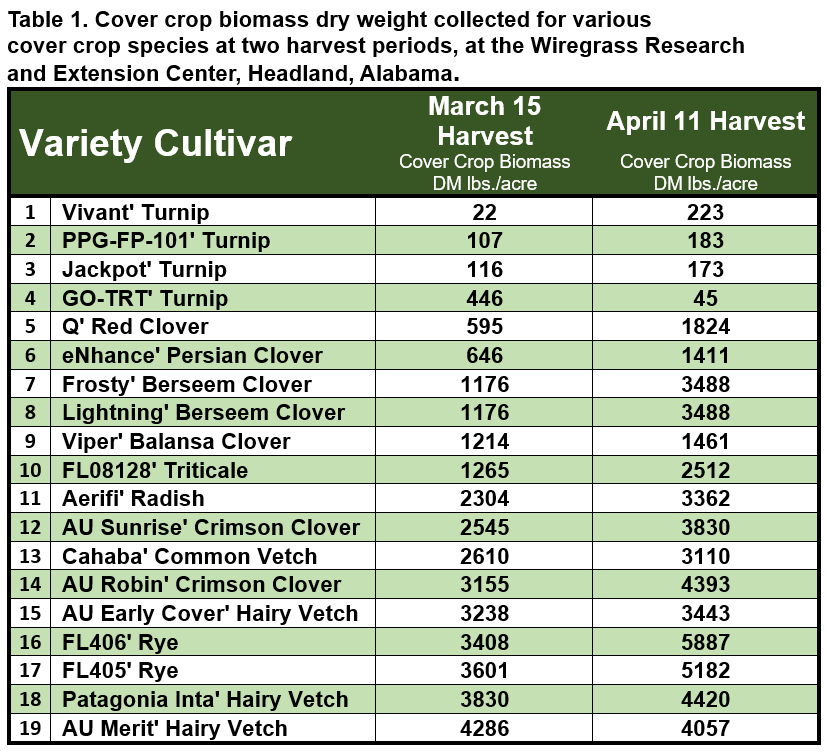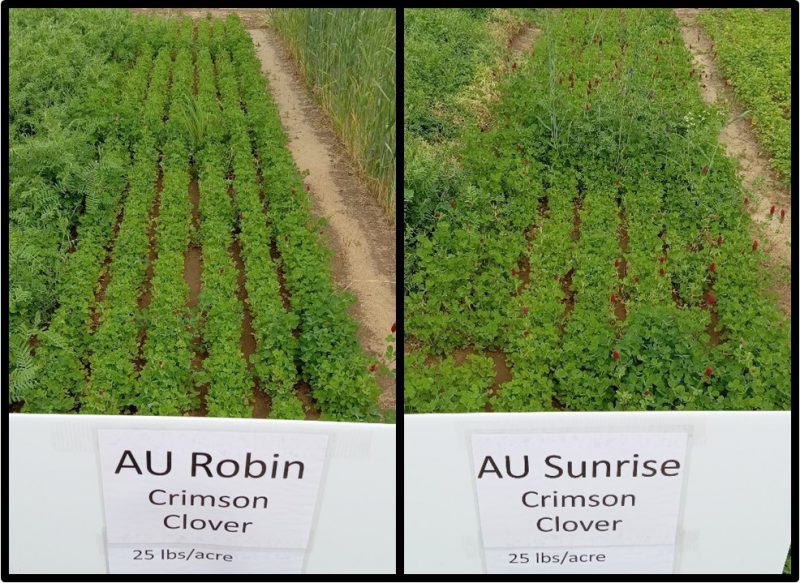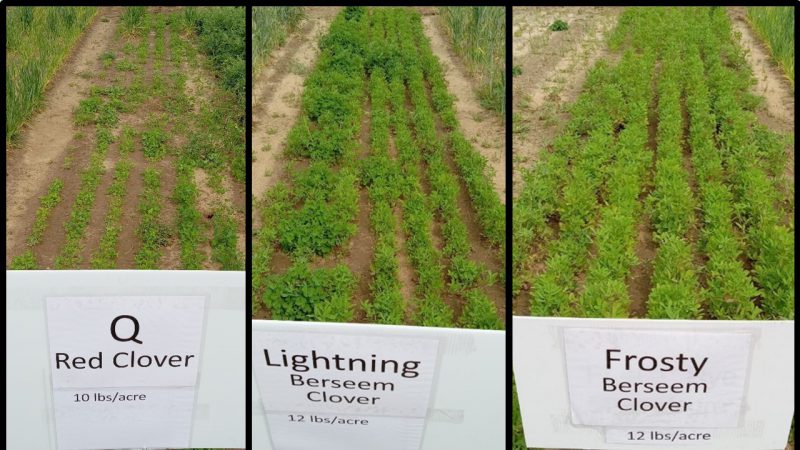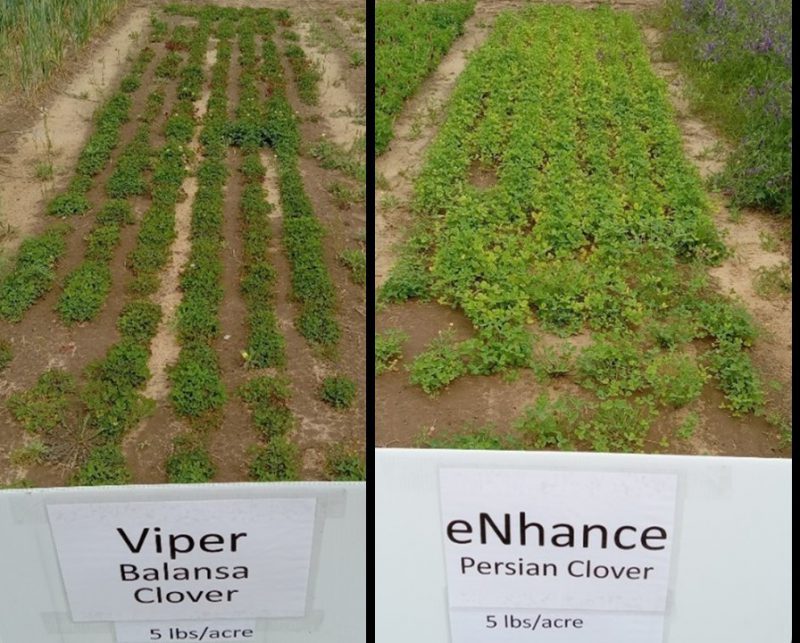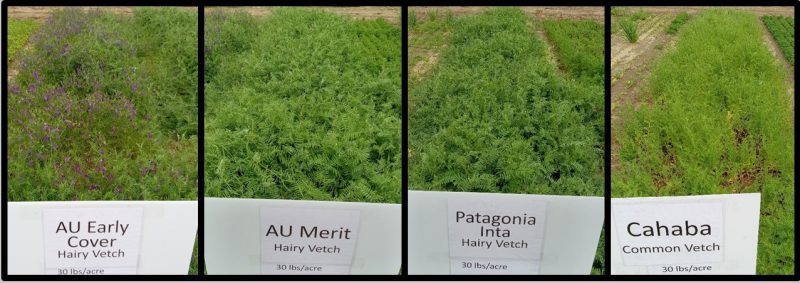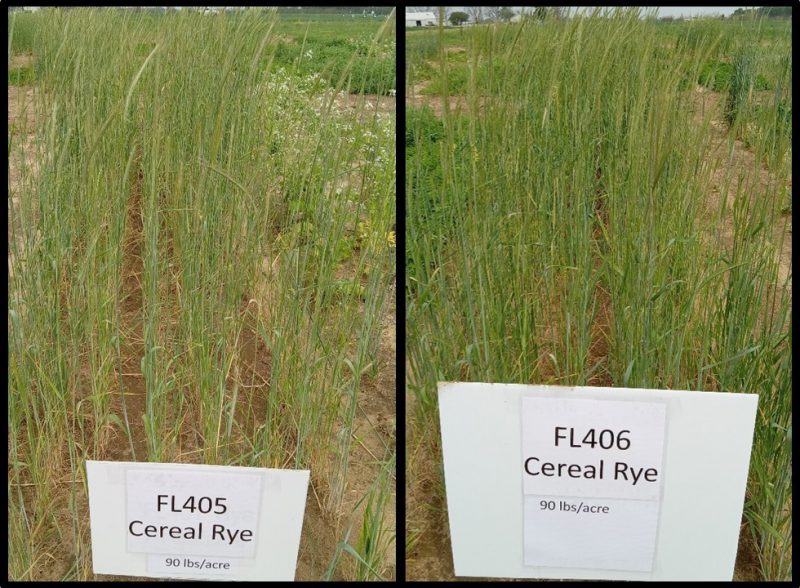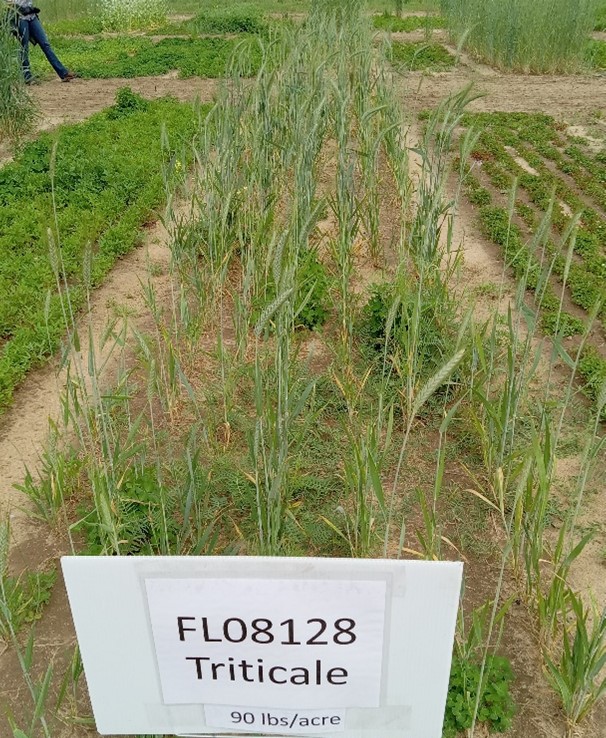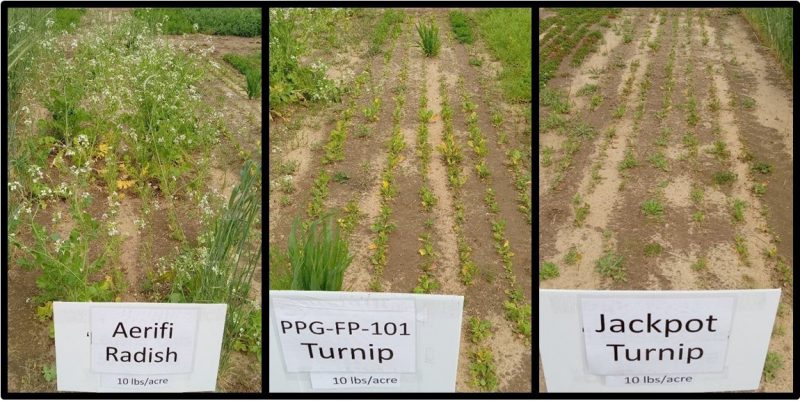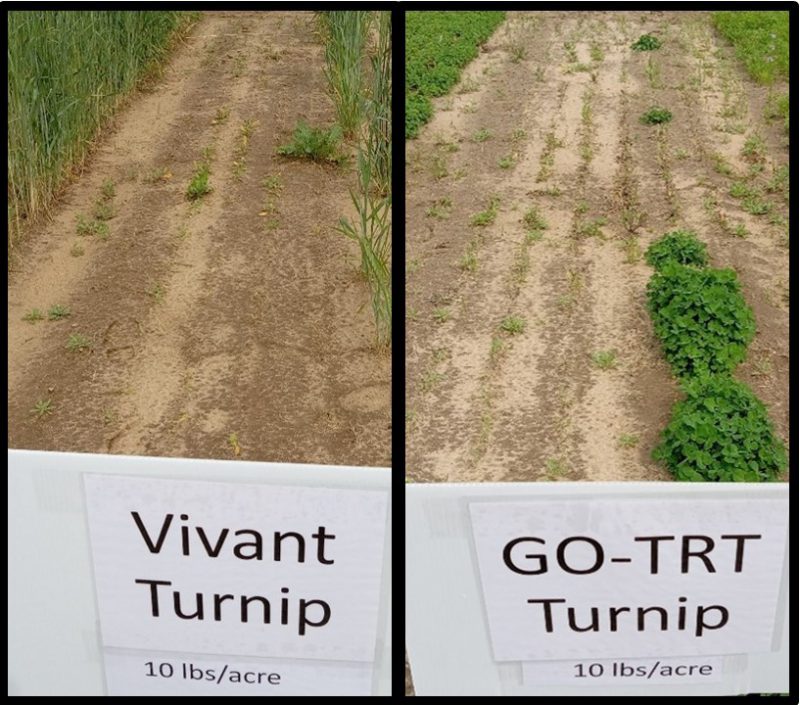Ethan Carter, UF/IFAS Regional Crop IPM Agent; Audrey Gamble, AU Crop, Soil, and Environmental Sciences; Ann Blount, Southern Seed Certification
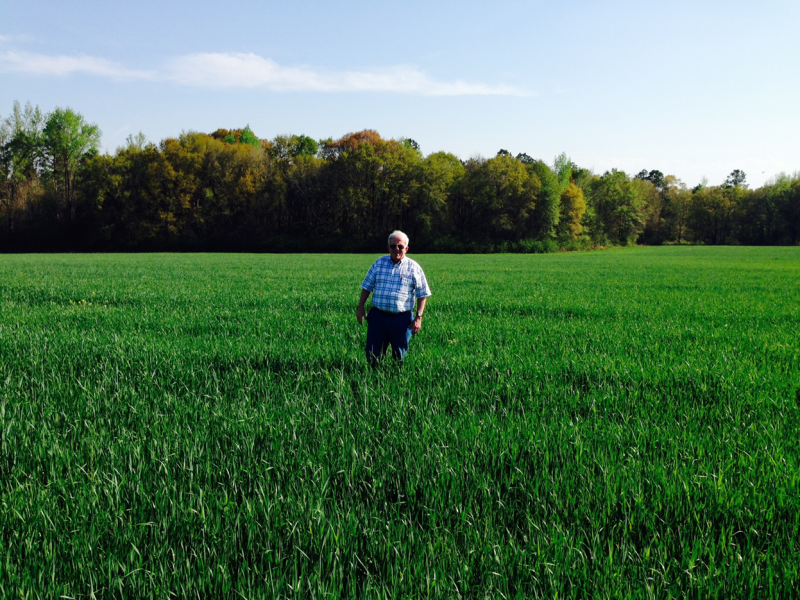
Triticale grown on a North Florida dairy as a cool-season cover crop grown for silage that was followed by a spring corn planting. Credit: Ann Blount, Southern Seed Certification.
As corn harvest wraps up and the peanut/cotton harvest begins, now is the time to plan for and coordinate a field’s subsequent crop. Cover crops play a vital role in promoting soil health and quality, increasing organic matter, water infiltration, and reducing erosion from wind and rain. From a pest management perspective, other benefits include disrupting insect life cycles, reducing fungal pathogens harbored by crop residue, and suppressing weeds, which would otherwise take advantage of a fallow field and result in a larger weed seed bank. If these benefits alone were not enough to convince you to plant cover crops, contact the Natural Resources Conservation Service (NRCS) to learn more about entry and enrollment into their Environmental Quality Incentives Program (EQIP) and/or the Conservation Stewardship Program (CSP), which provides payments to approved growers registered in their cost share programs. The Florida Department of Agriculture and Consumer Services (FDACS) also has a cost share program, which rewards growers who implement best management practices (BMPs), and a cover cropped system could potentially be leveraged for new equipment through their program (strip till rigs, grain drills, etc.).
This article showcases 19 different cover crop species with potential in the Southeast. They include legumes, grasses, and brassicas and could be seeded in a blend, but the rates discussed in this article were used for monoculture or single species plots. This article is not meant to be an extensive list of cover crop varieties, it only discusses what was provided to university trials for variety testing programs. There are other recommended crops used for cover crops in the SE, this is but a fraction of available genetics. Species selection will differ by farm being dependent on the timing of planting, timing of termination, and the end goal (grazing, soil erosion prevention, weed suppression, etc.).
Small grains are typically considered cheap cover crops and good ground cover sources. Legume integration is good to bring in nitrogen and provide diversity. Brassicas also provide diversity but do not contribute as much to biomass. Keep in mind that blended species plantings may require higher rates for some species and lower for others. The images below were taken of the 2022-2023 Cover Crop Trial at Auburn University’s Wiregrass Research and Education Center in Headland, AL earlier this year. The table below shows biomass yield data for each variety/species from two harvest dates collected in Headland. These plots were replicated as part of 11 locations (southernmost site- Citra, Florida to the northern-most site in Kentucky).
All plots were planted on October 28, 2022, making them roughly four and half months old (around 136 days) in the pictures. Plot images are shown below for each species to provide an idea regarding the amount of biomass/forage generated in that time-frame. All have maturity windows that differ by a few weeks. If a long-lasting biomass duration is the goal, legumes are a good option
–
Crimson Clover
AU Robin is not commercially available, the Alabama crop improvement program has been working diligently to bring back some of the AU varieties that are still relevant for cover crops and forages in the southeast. AU Sunrise would be a good early maturing option prior to corn planting. There are several southern developed crimson clover varieties on the market that are early forage producers and fit well into cover crop systems for our area.–
Q Red, Lightning & Frosty Berseem Clover
Red clovers are very popular in temperate states but in the Southeast is one of the latest maturing varieties to extend the growing season. Bereseem clover is often not readily available on the local market and may need to be special requested or ordered well in advance prior to planting. It is slower growing than other clovers (like crimson) but will still provide good biomass if you terminate in mid-April. Frosty berseem has been recommended for Florida, as it demonstrates a slightly better growth rate compared to the other berseem varieties in this trial.
–
Persian & Balansa Clover
Persian clover prefers a slightly heavier soil type and has a tendency for late forage production. It is useful as a cover crop for later legume production in a blend and is a good pollinator food source. Balansa clover is similar to Persian and Berseem clovers with late forage production. However, it does have a fit as a legume cover crop and also provides a food source for pollinating insects.
–
Vetch
In this trial, all vetch varieties were planted at 30 lbs/ac. AU Early Cover is not currently commercially available, however Alabama Crop Improvement has been working diligently to bring back some of well-adapted e Auburn University varieties relevant for cover crops and forages in the southeast. AU Early Cover would be a good early option prior to corn planting. Cahaba White and AU Merit hairy vetches are both well adapted to this area and are available on the commercial market this year.
–
FL 405 and 406 Rye
Very early maturing cereal ryes with rust resistance that should be available commercially very soon. FL 405 will be the earliest southern rye on the market. FL 406 is a little later than 405, but both will work well as cover crops. FL 405 is derived from the original FL 401 and FL 406 is a strain population. The small grain seeding rate is recommended at 90 lbs/ac, these plots were impacted by the hard freeze in early December and are unusually thinner than normal.
–
Triticale
This crop looks like wheat on steroids. It is a self-pollinating plant resulting from a cross between wheat and rye. The small grain seeding rate is recommended at 90 lbs/ac. This plot was impacted by the hard freeze in early December and is unusually thinner than normal.
–
Brassicas
All brassicas (turnips & radishes) generally need planted in early September in our region to acquire adequate growth/biomass. There are several varieties on the market, different companies list different seeding rates. Be aware of what you want and are planting for, these can pose a problem by reseeding in peanut if you are not carful. If this happens, 2,4-DB will be needed. In this trial, a seed rate of 10 lbs/ac was used for all radish varieties.
–
Summary
If you are interested in utilizing some of these cover crop species, reach out to local dealers such as Kelly Ag, Helena, Mixon Seed, Nutrien, and others, as well as farm service companies. Some crops/species are under patent and must be purchased through specific vendors, others are available through multiple vendors. The Southern Cover Crops Council has put together a seed vendor list with contact information. The Southern Cover Crops Council website has variety sheets and information for both spring/summer and fall/winter planted cover crops. They have included many other helpful resource links (selection tool, management, termination, equipment rentals, etc.) on their page. Other helpful resources generated by the University of Florida include:
-
Terminating Cover Crops Effectively for Weed Suppression
–
-
2023 Cool-Season Forage Variety Recommendations for Florida
–
-
Southeast Grazing Exchange
_
-
Cow Talks Podcast- Southeast Grazing Exchange
_
For more information or specific questions, contact your local extension agent.
- Provisional Nitrogen Fertilization Recommendation for Florida Cotton for the 2025 Season - June 20, 2025
- NFREC-Quincy Row Crop Field Day – July 21 - June 20, 2025
- NFREC-Marianna Peanut Field Day – August 14 - June 20, 2025

